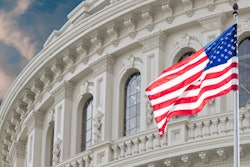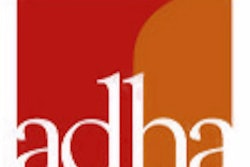
People who identify as Black, Latino, and Native American are severely underrepresented in dentistry compared to the U.S. workforce as a whole, according to a study published on March 31 in JAMA Network Open.
Researchers from George Washington University (GW) used publicly available data to develop a workforce diversity index that compares the racial and ethnic diversity of 10 different health professions to that of the general working-age population. A diversity index score of 1 represents parity, where the diversity of the U.S. workforce equals the diversity of the health profession.
The index identified severe underrepresentation for Black, Hispanic, and Native American dentists, with diversity index scores of 0.36, 0.31, and 0.09, respectively. The scores were lower for these three racial/ethnic categories in dentistry than for all 10 health professions combined.
The findings demonstrate that dentistry and other healthcare professions that require postgraduate education lag behind the general population in minority representation, noted study author Dr. Maria Portela, chief of family medicine for the department of emergency medicine at GW School of Medicine and Health Sciences.
"This trend is unlikely to change unless we devote attention and resources to fix it," Portela stated in a university press release.
To come up with the diversity index, the researchers used weighted publicly available data from the American Community Survey (ACS) and the Integrated Postsecondary Education Data System (IPEDS). The ACS included a weighted total of 148.3 million people ages 20 to 65 who were working or searching for work, while the IPEDS accounts for all awards and degrees conferred in a given year.
| Health workforce diversity index scores for current and future dentists | ||
| Race/ethnicity | Current workforce | Future workforce |
| White | 1.13 | 1.04 |
| Black | 0.36 | 0.36 |
| Hispanic | 0.31 | 0.46 |
| American Indian or Alaskan Native | 0.09 | 0.40 |
Black representation in dentistry was lower than one-half of the representation in the working-age population as a whole. For Hispanic and Native American dentists, representation was lower than one-third of the representation in the general working-age population.
The diversity index scores were lower for dentists than for the combination of all 10 health professions surveyed by the GW researchers. The average diversity index score for Black and Native American health professionals was 0.54 for all professions but 0.36 and 0.09 for dentistry. Hispanic professionals netted a diversity score of 0.34 for all health professions but 0.31 for dentistry.
"Our findings suggest that Blacks, Latinos, and other people of color have been left behind when it comes to the health professions," stated lead author Edward Salsberg, co-director of the Health Workforce Diversity Tracker project at the GW Fitzhugh Mullan Institute for Health Workforce Equity.
| Racial/ethnic diversity of current and future dentists vs. the workforce as a whole | |||
| Race/ethnicity | Current dentists | Future dentists | Current U.S. workforce |
| White | 69% | 57% | 60% |
| Hispanic | 6% | 10% | 18% |
| Black | 4% | 5% | 12% |
| American Indian or Alaskan Native | 0.1% | 0.3% | 0.6% |
Dentistry fared slightly better when the researchers looked at racial and ethnic diversity of the future dental workforce. Both Hispanic and Native American dentists are poised for double-digit gains in the researcher's diversity index. However, Black dentists will have no change in representation.
"Although the data show greater diversity among the new graduates who will be entering the health care professions compared with the current health care workforce, the diversity of the educational pipeline remains substantially below the diversity of the general population for almost all health care occupations analyzed in this study," the authors wrote.
Minority health professionals play a critical role in efforts to reduce the disproportionate burden of diseases among communities of color, the authors noted. For instance, dentists from underrepresented groups are more likely to practice in underserved areas and high-need specialties.
"By building a more diverse health workforce, the United States would improve access and improve outcomes in underserved communities and for high-need populations," stated co-author Toyese Oyeyemi, co-director of the diversity tracker project.
The study is one of the first to measure the representation of Blacks, Latinos, and other minorities across the current health workforce and compare it to future diversity, the authors noted. While the lack of diversity in dentistry stems from a variety of factors, transparency of data regarding race/ethnicity may help efforts to increase workforce diversity.
"Our hope is measuring, tracking, and regularly publicizing the lack of diversity in the health professions will raise awareness and visibility of these disparities and encourage organizations, states, and individual institutions to enact change that will benefit the whole community," Portela stated.



















